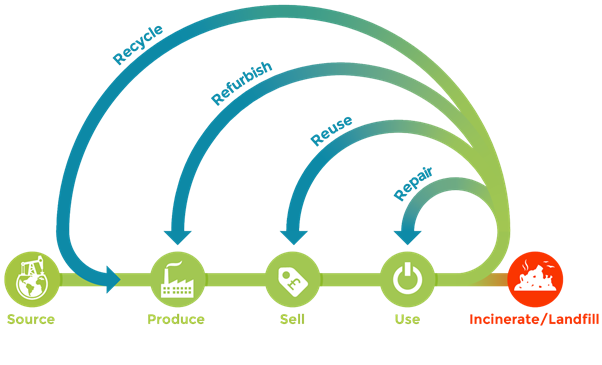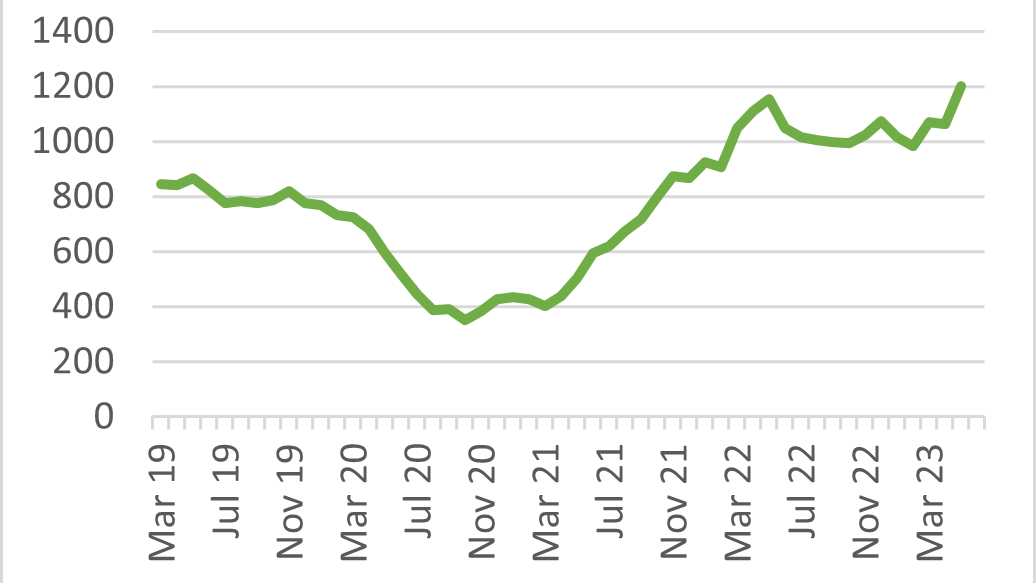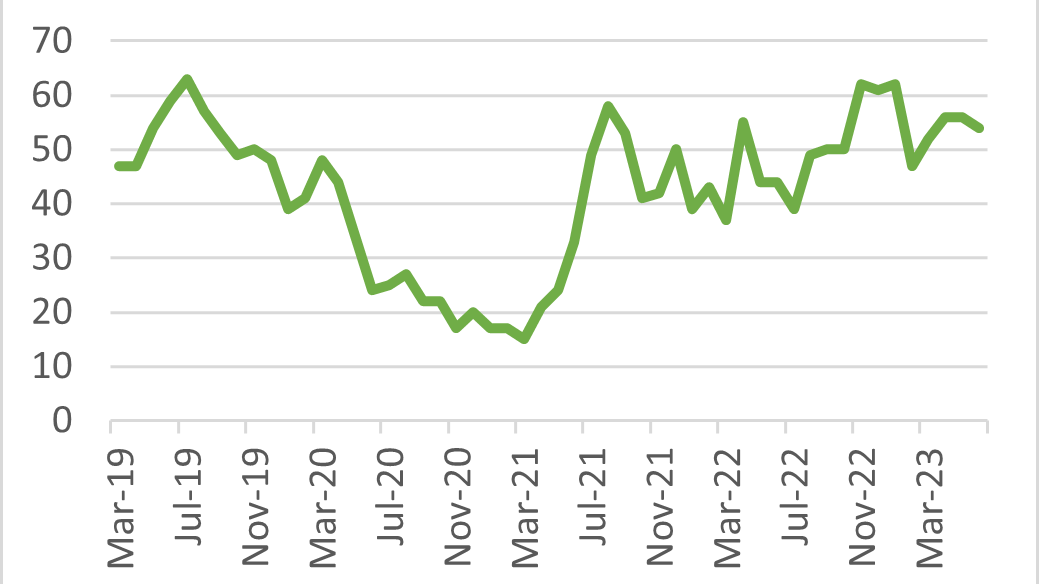Transforming Scotland’s Built Environment through Circular Economy
Building a Sustainable Future: How the Circular Economy is Changing the Built Environment in Scotland
Accounting for almost 10% of Scotland’s total Gross Added Value (GVA), the built environment is a significant contributor to the Scottish economy. However, the built environment also produces 40% all emissions in Scotland. To achieve Scotland’s ambitious net-zero targets by 2045, it will be imperative that the built environment becomes decarbonised. One solution, the circular economy. A model based on the idea of designing out waste and extending the lifetime of materials in use. This will require a fundamental shift in the way we approach production and consumption, moving from the traditional linear model of take-make-dispose to a circular model of reduce-reuse-recycle. The world economic forum found that, adopting such circular practices could increase efficiency of the global construction industry and save as much as $100bn per year.

The shift from a linear model to a more circular can pave the way for new innovative business ideas and opportunities. But is the construction sector in Scotland ready for the challenge?
The last few years has seen unprecedented stress on the sector, with labour shortages, material supply issues, inflation, energy price volatility, and the economic impact of rising interest rates all impacting profitability and cashflows. There has been an associated increase in insolvencies in the construction sector with insolvencies up by 30.8% in the first six months of this year compared to the same period last year. As businesses juggle the financial and demand driven pressures, focusing on longer term issues such as circular processes may not get the attention needed in order to achieve Scotland’s targets.
Construction sector insolvencies – England and Wales rolling 3 month total

Construction sector insolvencies – Scotland rolling 3 month total

Government support and sound policies will be required to ensure that the sector can access the materials and funding needed to begin making the necessary changes.
Scottish Water are a prime example of a company who are thinking about waste in new ways. Partnered with Zero Waste Scotland, Scottish Water are transforming grit found in water systems into raw building materials for the construction industry. Such an example is exactly how the circular economy model promotes the idea that businesses can reduce the cost of their construction and maintenance projects, by keeping materials in use for as long as possible and repurposing them at the end of their lifecycle.
Collaboration by Zero Waste Scotland and other governing bodies has resulted in a whole host of free resources and materials being made publicly available to businesses of all shapes and sizes. Some of which include:
- Setting out targets and plans for diverting construction waste from landfill and reducing carbon emissions from the built environment.
- Dedicating websites to resources and tools such as the Site Waste Reduction protocol and Construction Waste Indicative Cost Calculator (CWIC). A tool like the CWIC is useful for quantifying the value of waste. Doing so will encourage uptake of circular principles like repurposing waste material. If there is no way to value waste, there is no impact.
The emphasis on creating new bold solutions to combat the impacts of climate is slowly but surely becoming a central theme across most industries today. The built environment is no exception. Now more than ever the sector faces a variety of challenges, including over consumption of energy, waste generation, and resource depletion. From a business perspective these challenges encourage innovative thinking and present opportunities to those with entrepreneurial mindsets. Some of which include:
- Cost Reduction: the adoption of more circular practices reduces costs by decreasing material consumption and minimising the waste generated. Utilising greener raw material procurement may be a major way to reduce costs.
- New income streams: The circular economy will present many new sustainable methods of revenue streams. Repurposing and reusing goods and product leasing/ sharing models are just some potential ways that offer companies the opportunity to tap into secondary markets.
- Brand Reputation: Opportunity to prove to your customers that you are committed to adopting more sustainable practices. Environmentally conscious consumers in today’s world are more willing to pay for a premium sustainable product.
- Innovation and Competitive Edge: the increased demand for more bold solutions creates new opportunities to design products which are more durable and easier maintained whilst reducing the amount of waste. New innovative practices that embed circularity, will likely benefit from first movers advantage in this industry.
Implementing more circular practices into an organisation may not be as daunting as one might think. The extensive number of free materials, resources, guides etc. provide insights to help decision making and meet KPIs. Below we have highlighted several ways how, businesses right across the supply chain, can introduce measures to get ahead of the curve and demonstrate your commitment to greener practices:
Adoption of Green Building Standards
Frameworks such as BREEAM (Building Research Establishment Environmental Assessment Methodology) are widely used as a tool of environmental assessment. Certifications obtained from such a third-party body, ensure buildings are built in a sustainable manner. Implementing such frameworks are just some ways of differentiating your business from less-environmentally conscious competitors and may boost confidence of potential investors.
Green Finance
An array of innovative financing models specific to the sector are emerging due to the inadequate nature of traditional financing options. Businesses will benefit from tax breaks and low interest bank loans to meet net-zero targets.
- Scottish Government’s Energy Efficiency Business Support Scheme offers businesses loans and grants to help adopt greener energy measures.
- Scottish Investment Bank provides opportunities to secure funding for businesses who promote the use of renewable energy.
- Various private investment options to raise the needed capital to support the switch to more sustainable practices.
Sustainable Design
Incorporating sustainable design into the foundations of a building will be integral for adapting buildings in the future. The dynamic nature of how humans live should be a key factor in the initial design phase to cope with the everchanging trends.
Post Occupancy Evaluation (POE)
A huge issue with new builds is that the environmental impact after it has been built has not been taken into account. A POE may identify how to incorporate more sustainable practices into a new build and reduce environmental impact and wider socio-economic groups.
The promotion of free available resources to businesses, will be key in accelerating the uptake of more sustainable practices.
Scotland’s built environment is making significant strides towards becoming more circular future and setting the future foundations for a more sustainable built environment. As a business operating in the construction industry, now is the time to act and take the necessary steps to get ahead of the curve.
Where Now Consulting Ltd is a consultancy and business advisory firm that specialises in facilitating business transformation and growth. By partnering with our clients, we aim to enhance their overall business performance. Our team consists of professionals with diverse skill sets ranging from sales, operations to finance, allowing us to provide a comprehensive approach to support our clients. Whether your business requires a new growth strategy or is going through a crisis of strategy, profitability, or liquidity, Where Now Consulting is committed to being your partner for future success.
